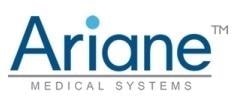Typical rectal cancer treatment protocols are intensive and involve several steps, including invasive surgical intervention.1 The surgical removal of rectal tissues is a standard procedure to treat rectal cancer, in addition to chemotherapy and radiation therapy.2
 Image Credit: Shutterstock.com/chainarong06
Image Credit: Shutterstock.com/chainarong06
This aggressive strategy can pose a risk to the health outcomes of rectal cancer patients. Many patients are over 65 years of age, and finding safe and effective alternative treatments is essential for reducing the risk of morbidity and mortality and improving organ preservation.
There is an urgent need for non-invasive cancer therapies that improve medical outcomes for patients. One emerging approach is the Watch and Wait (W&W) protocol, which avoids surgery and relies on regularly monitoring patients with no visible tumors after radiation and chemotherapy treatments.
There is a pressing need to improve the Watch and Wait protocol due to concerns with tumor recurrence post-treatment and consequent mortality risk caused by some cancer cells not being destroyed during the initial treatment.
One solution, which can strengthen Watch and Wait efficacy, is contact X-ray brachytherapy (CXB), also know as the Papillon technique. This approach benefits early-stage cancer patients who would otherwise be unsuitable surgery candidates.1
This article will focus on how contact X-ray brachytherapy (CXB) offers a non-surgical method to treating rectal cancer and improving organ preservation. The piece will also discuss how a contact X-ray brachytherapy (CXB) boost could enhance the Watch and Wait protocol.
Contact X-Ray Brachytherapy boosts rectal cancer response rate
Contact X-ray brachytherapy (CXB), also known as Papillon CXB, is a form of brachytherapy that specifically targets visible tumors with high dose, low energy X-rays instead of radioisotopes. This technique penetrates only a few millimeters past the tumor, ensuring non-cancerous tissue is unaffected by radiation and the health of surrounding organs is preserved.1
Multiple studies have demonstrated that contact X-ray brachytherapy boosts rectal cancer response rate during the Watch and Wait approach. Research by North Cumbria University Hospitals in the UK reviewed 17 patients treated for rectal cancer over six years with contact X-ray brachytherapy boost.3
Of the 14 remaining patients, 79% exhibited a complete (no tumors visible) or partial response to the treatment. Contact X-ray brachytherapy boost led to sustained therapeutic response over time in advanced disease levels and high-risk patients.3
A French study examined the impact of contact X-ray brachytherapy on organ preservation in 112 rectal cancer patients.4 Three experimental groups were studied:
- Local tumor removal followed by CXB
- CXB with chemoradiotherapy
- CXB and chemoradiotherapy before complete rectal tissue removal
The first group displayed 96% organ preservation, with the second group displaying 89% organ preservation and a complete clinical response in 96% of patients. Some organ preservation occurred in 86% of patients in the third group.
The scientists concluded that contact X-ray brachytherapy could increase organ preservation and boost other rectal cancer radiation treatments4. The clinical approach is suitable for surgical-appropriate and non-surgical patients.
Another clinical study looked at dose escalation effects on tumor regression in 83 rectal cancer patients.5 This involved 90 Gy of CXB in three fractions over four weeks (a fraction every two weeks). The study used a multi-modal approach, combining CXB treatments with radiation therapy and external beam chemoradiation therapy.
Most of the study’s patients observed a complete clinical response, suggesting that contact X-ray brachytherapy could be an effective alternative to aggressive and invasive surgical procedures.5
The results of a Phase 3 trial of Organ Preservation for Early Rectal Adenocarcinoma revealed that CXB, also referred to as the Papillon boost, in addition to the Watch and Wait protocol, increases complete clinical response to over 80%.6
The Papillon boost can act as a legitimate non-surgical alternative that impacts the general quality of life and mental well-being of rectal cancer patients.
Innovating Contact X-ray Brachytherapy treatments for organ preservation in rectal cancer therapeutics
Contact X-ray brachytherapy is a non-surgical method that supports organ preservation and lowers patient risk in rectal cancer treatment.
Leading life sciences companies, including Ariane Medical Systems, provide innovative contact X-ray brachytherapy technologies to improve patient health outcomes.
Ariane Medical Systems has developed the Papillon+ X-ray Brachytherapy system that can be adapted to numerous applications, including breast and superficial skin cancer treatment, and performing contact X-ray brachytherapy treatment for rectal cancer.7
The Papillon+ X-ray Brachytherapy system is an all-in-one workstation created to prioritize ease of use and safety.7
The company’s system delivers an efficient method to treat tumours and prevent the need for intensive surgery, particularly for rectal cancer.7
The Papillon+ X-ray brachytherapy system from Ariane Medical Systems provides a non-surgically invasive approach that emphasizes patient comfort and positive health outcomes.
Ariane Medical Systems is a frontrunner in clinical cancer solutions, offering global technology solutions and services.
Clinicians provide patients with individualized treatments using innovative tools such the Papillon+ X-ray brachytherapy system, which complements clinical approaches, such as the Watch and Wait protocol, and amplifies organ preservation.
More information about Ariane Medical contact X-ray brachytherapy technologies and additional medical solutions can be found on the company website. If you are interested in learning more about contact X-ray brachytherapy treatment, contact a member of the Ariane Medical team today.
References
- Sun Myint et al. (2019) Treatment: the role of contact X-ray brachytherapy (Papillon) in the management of early rectal cancer Colorectal Disease 21 pp 45-52 [online] Available at: https://doi.org/10.1111/codi.14507
- News-Medical. (2020, October 27). New approach can prevent aggressive operation in certain rectal cancer patients. News-Medical.net. https://www.news-medical.net/news/20201027/New-approach-can-prevent-aggressive-operation-in-certain-rectal-cancer-patients.aspx
- Smith, F.M et al. (2016) Contact radiotherapy boost in association with “watch and wait” for rectal cancer: initial experience and outcomes from a shared programme between a district general hospital network and a regional oncology centre. Colorectal Disease, 18(9), 861–870 [online] Available at: https://doi.org/10.1111/codi.13296
- Frin, A.C et al. (2017) Organ or sphincter preservation for rectal cancer. The role of contact X-ray brachytherapy in a monocentric series of 112 patients. European Journal of Cancer, 72, 124–136. [online] Available at: https://doi.org/10.1016/j.ejca.2016.11.007
- Sun Myint et al. (2018) Dose Escalation Using Contact X-ray Brachytherapy After External Beam Radiotherapy as Nonsurgical Treatment Option for Rectal Cancer: Outcome From a Single-Center Experience. International Journal of Radiation Oncology*Biology*Physics 100(3) pp. 565-573 [online] Available at: https://doi.org/10.1016/j.ijrobp.2017.10.022
- Myint, A. S., et al. (2022). New hope from OPERA trial for surgically fit rectal cancer patients who wish to have organ preservation. Colorectal Disease. [online] Available at: https://doi.org/10.1111/codi.16286
- Brachytherapy System | Papillon Therapy. (2022, July 22). Ariane Medical Systems. [online] Available at: https://www.arianemedicalsystems.com/products/papillon-therapy
About Ariane Medical Systems
 X-ray brachytherapy: Breast, rectal & skin cancer treatment with the Papillon +
X-ray brachytherapy: Breast, rectal & skin cancer treatment with the Papillon +
Ariane Medical Systems Ltd was incorporated in 2005 to optimize the use of low energy X-rays for the treatment of accessible tumors. Working closely with clinical partners the Papillon50 X-ray Brachytherapy system was developed to treat lower rectal tumors. The Papillon 50 is now treating patients in Denmark, France, Sweden, Switzerland and the UK.
In 2016 the Papillon+ X-Ray Brachytherapy system was developed to deliver an Intra-Operative Radiotherapy (IORT) Boost to tumor beds as well as the tumor itself.
Sponsored Content Policy: News-Medical.net publishes articles and related content that may be derived from sources where we have existing commercial relationships, provided such content adds value to the core editorial ethos of News-Medical.Net which is to educate and inform site visitors interested in medical research, science, medical devices and treatments.